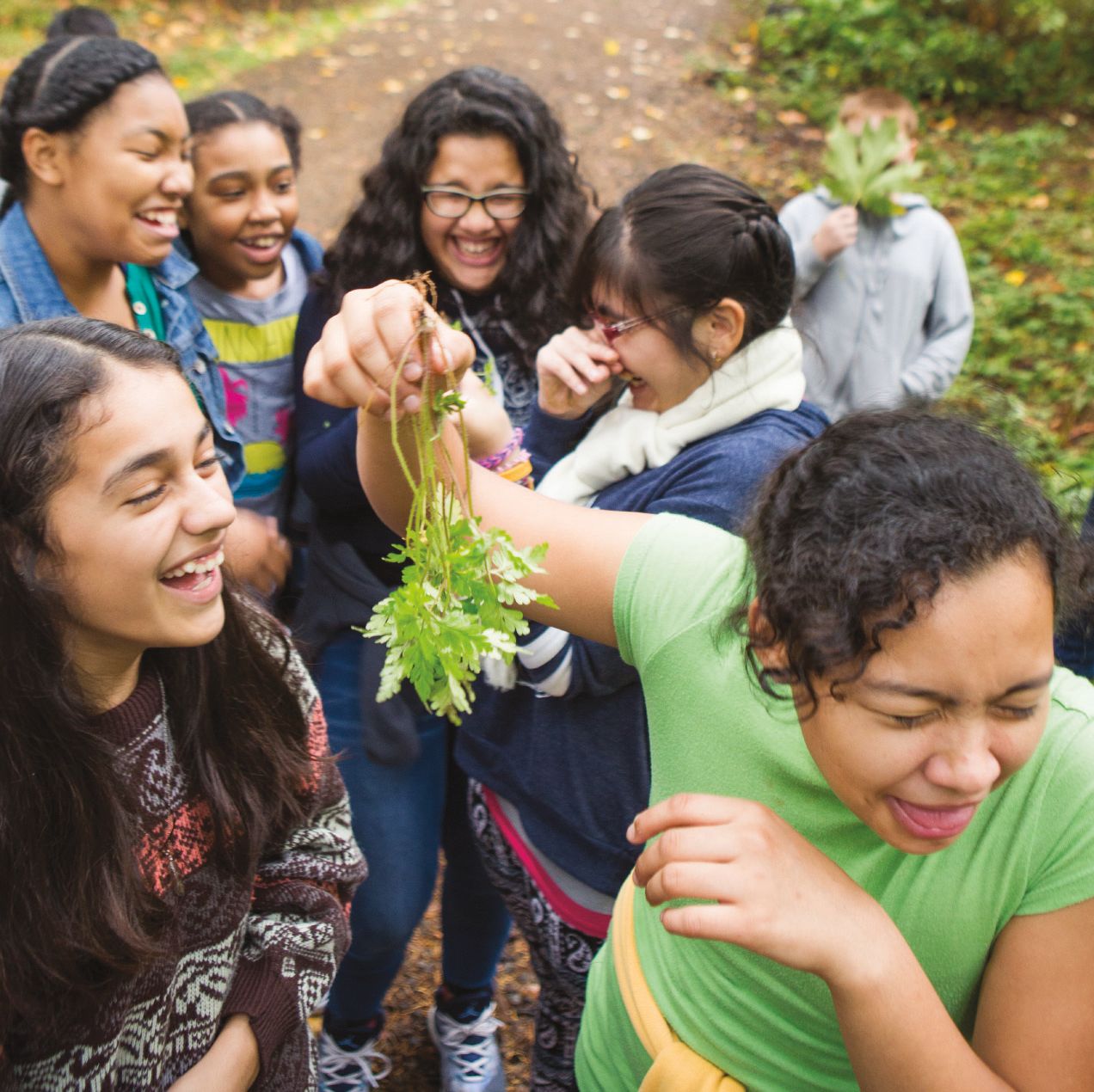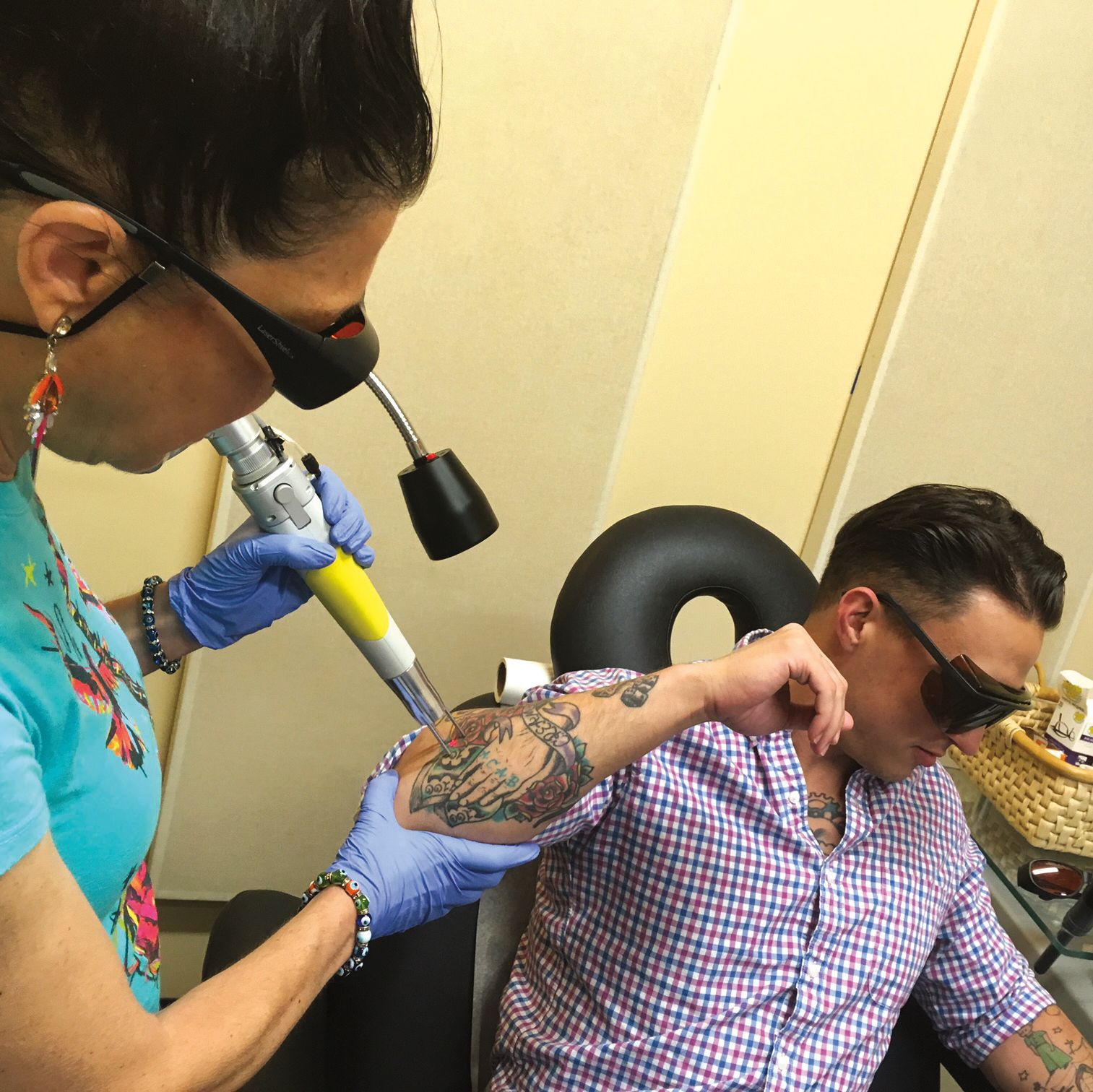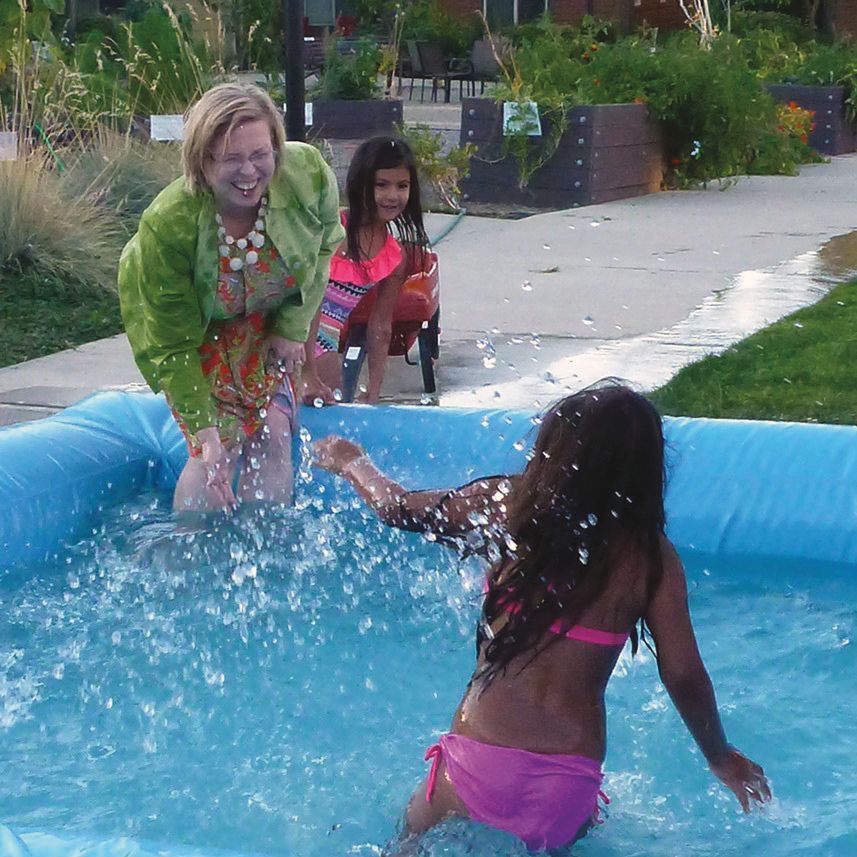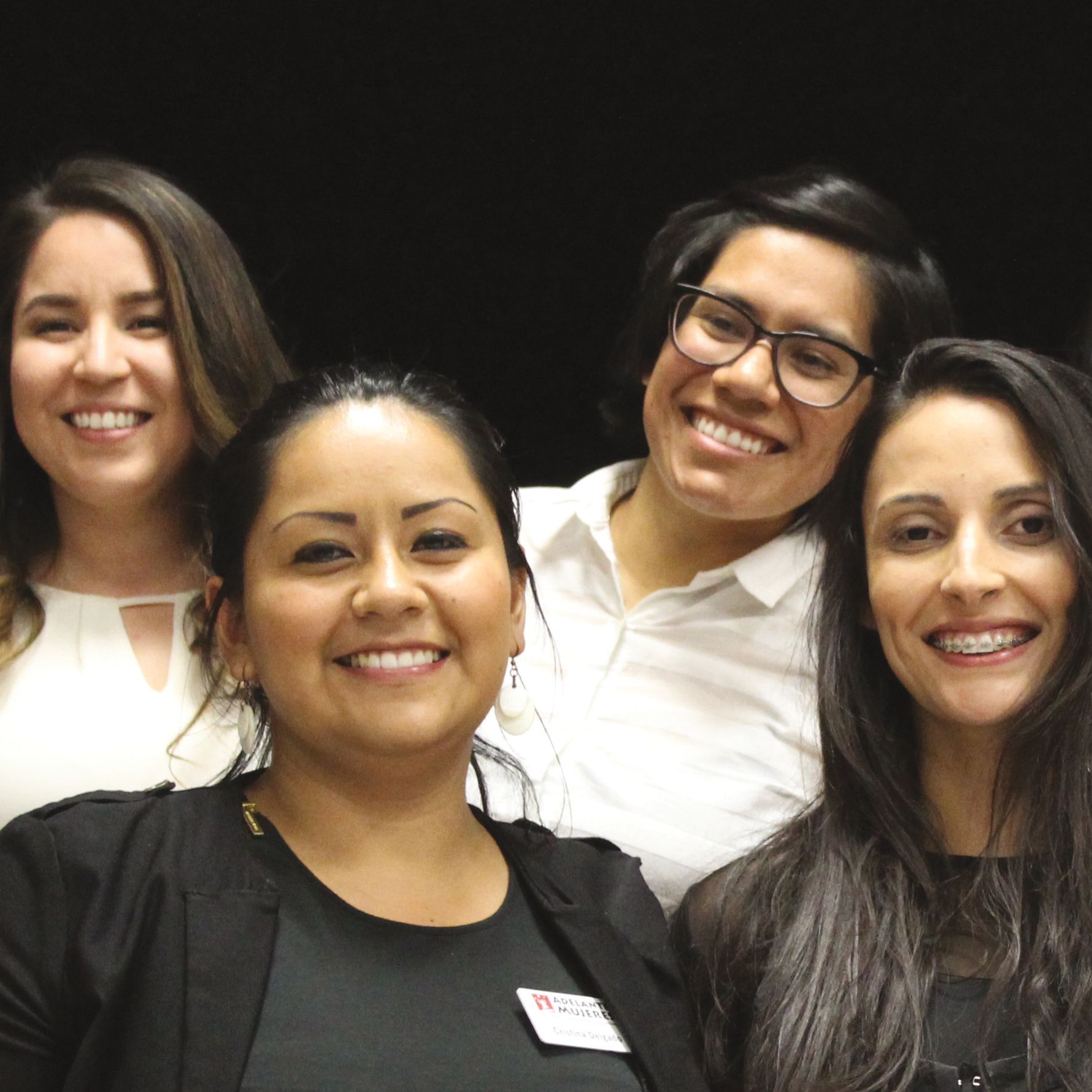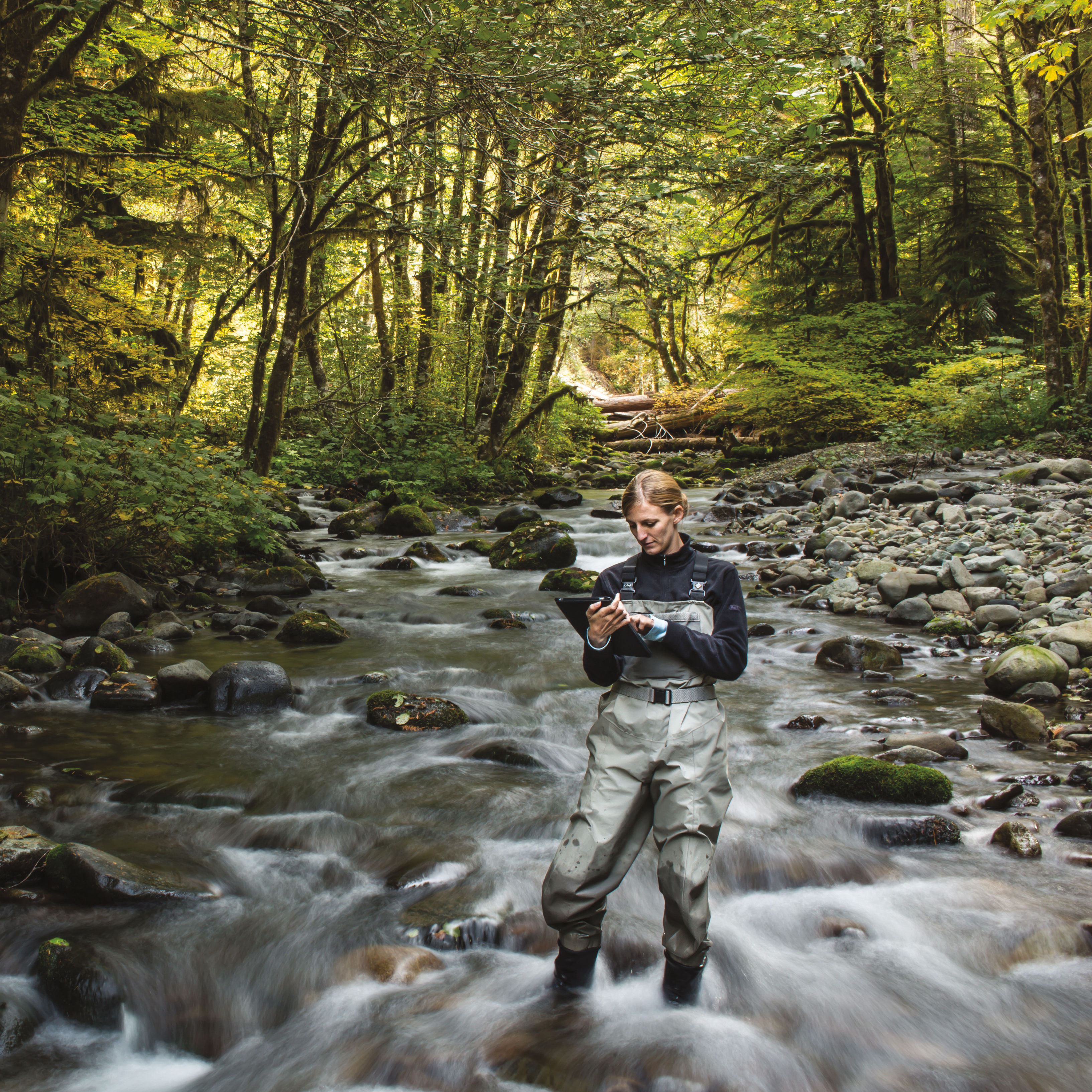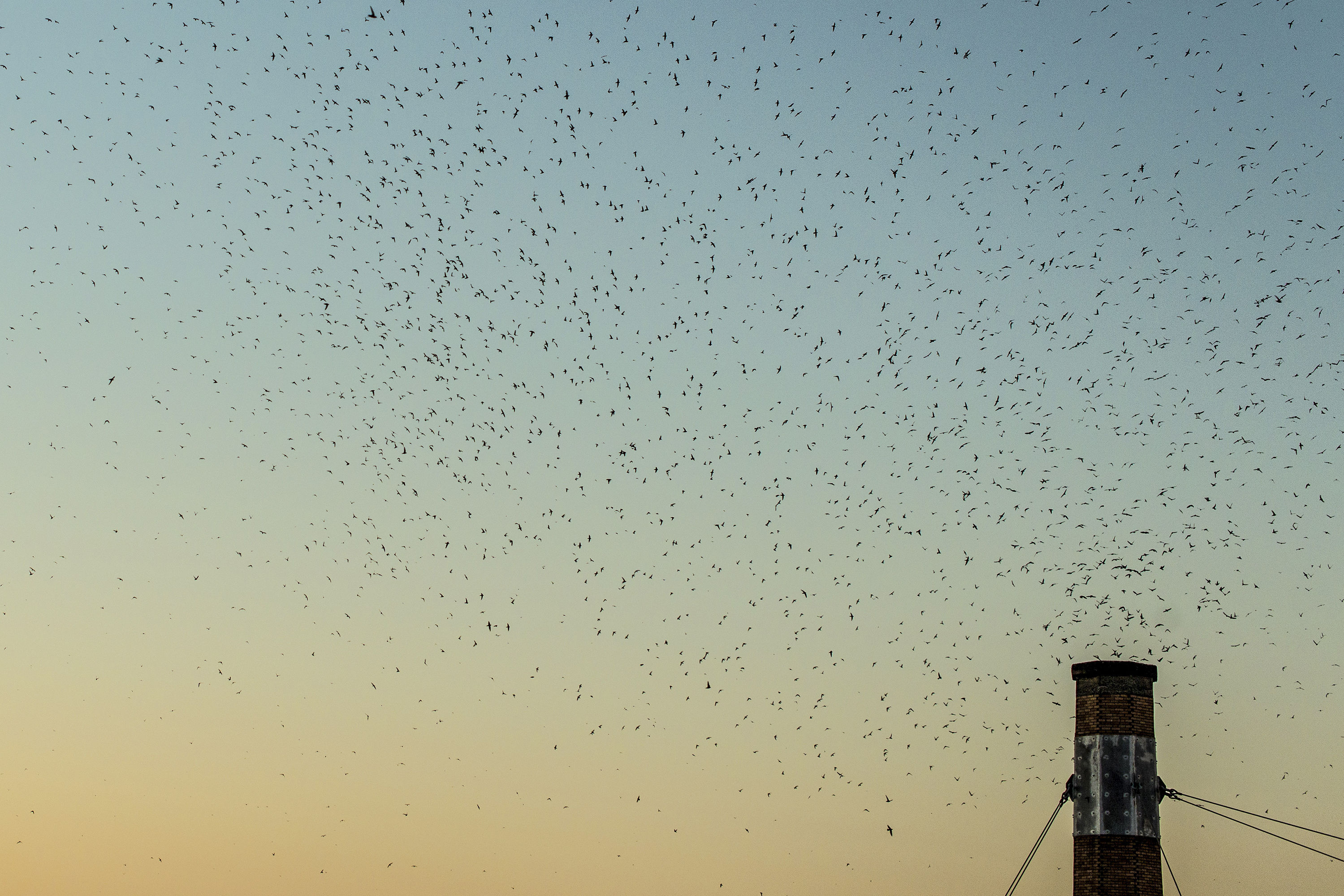How the Freshwater Trust Protects America’s Waterways with Surgical Precision
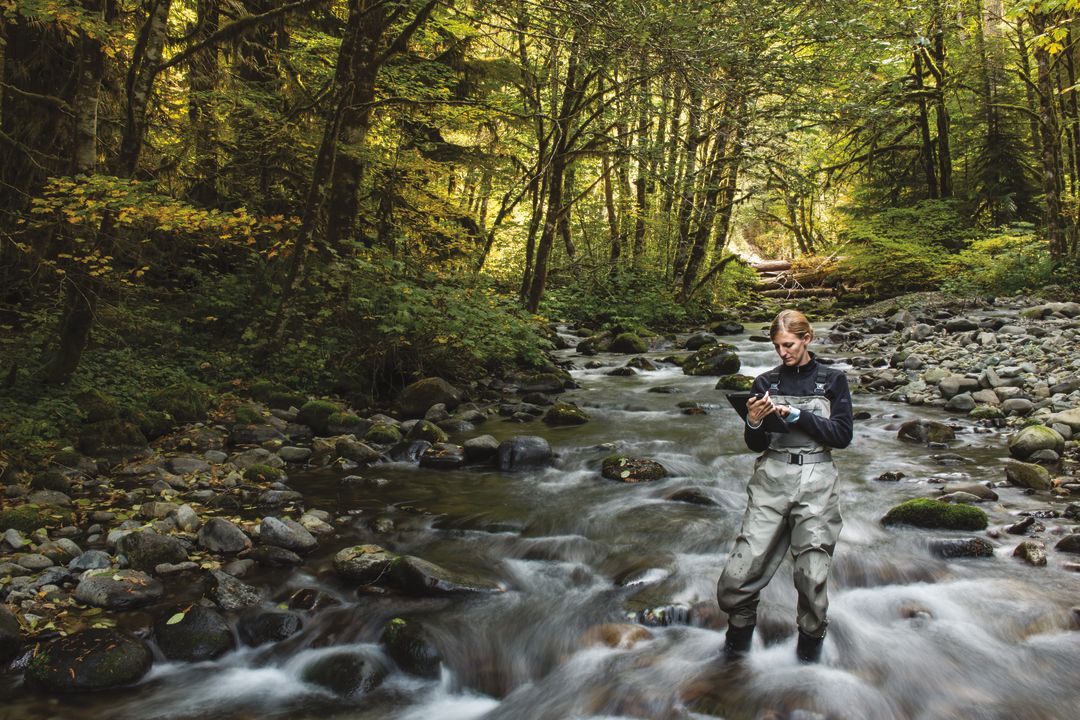
The Freshwater Trust’s Meg Belais uses a stream monitoring app on Oregon’s Still Creek
Litigation—that was environmental law’s big hammer back in 2000, when Joe Whitworth graduated from Lewis & Clark Law School. Back then, he says, suing the government was how you stopped bad things in a world where the land and the economy were seen to be at war. But in the 16 years Whitworth has served as president of river-stewarding national nonprofit the Freshwater Trust, he’s seen lawsuits do less and less to protect America’s watersheds in the long term.
“We were the great green wall of ‘no,’” says Whitworth. “We’ve done great work [with lawsuits]. But it’s created an abusive relationship with our agencies.”
Instead, Whitworth and his scrappy team of 45 employees set out to build new hope in the form of new tools—maps and lasers, gadgets and data packets. Hang out in the Freshwater Trust’s new downtown Portland office these days, and you’ll hear the same sort of eager geek talk you’d expect in Silicon Valley.
Think of the approach as medical: if America’s waterways are its veins, the Freshwater Trust is the smarty-pants doctor who can find the real problem. That means LIDAR revealing a basin’s precise topography—down to a few inches off the ground. Drones that slash human fieldwork time, so that habitat monitors can literally cover more ground. And GIS mapping that allows for data analysis so precise that Whitworth’s team knows exactly how many gallons of water one acre of alfalfa consumes.
These new technologies have allowed the Freshwater Trust to become one of Oregon’s most important and active environmental nonprofits. Since 2012, the trust’s arsenal of “quantified” nutrient-tracking and shade-creating tools have been used to help drop temperatures in dozens of Oregon rivers by almost 12 degrees Fahrenheit. One of its longest-running projects, Lostine River, last year documented more than 1,000 adult fish returning to spawn—up from 13 fish 17 years earlier.
“Before, we relied on random acts of conservation,” Whitworth says. “We threw money at the problem and largely missed. With these new tools, we can sort through three million acres to find the 50 that will fix the problem.”
How to Save the Planet the Freshwater Way
Make rivers “rougher.”
When it comes to preventing floods, land management agencies traditionally stuck to the straight and narrow: removing logs, eliminating side channels. The approach hasn’t worked, says the Freshwater Trust—though it’s certainly taken a toll on aquatic life. To bring back fish, reestablish pools, and reinvigorate natural floodplain controls, the group made almost 200 log and boulder jams in the Salmon River and Still Creek.
Throw shade.
Five years ago, Medford’s treated wastewater was warming the Rogue River, a pricy problem made urgent by the Clean Water Act. The Freshwater Trust stepped in with a surprisingly affordable idea: planting miles of stream with trees purchased from local nurseries—a then-novel solution that’s since taken root across the nation. Said President Obama: “It worked for business, it worked for farmers, it worked for salmon. Those are the kinds of ideas we need in this country.”
Monetize groundwater.
The strict water rationing established by California’s 2014 Sustainable Ground-water Management Act is particularly tricky for some Golden State farmers. To make compliance more affordable, Whitworth and his team proposed quantifying a winter groundwater “recharge”—encouraging farmers to saturate fields at the high water mark, and then trade credits for unused water.
